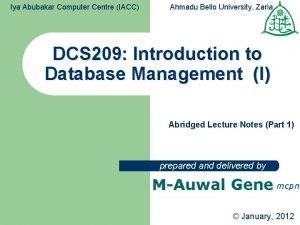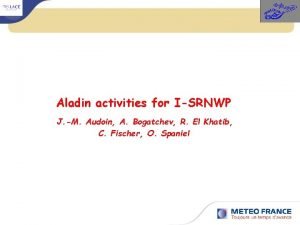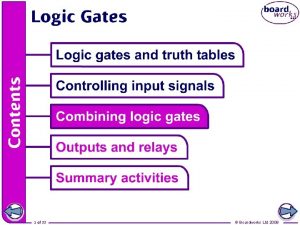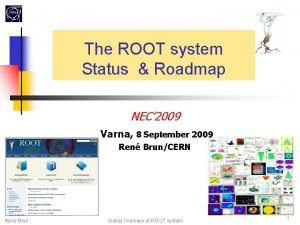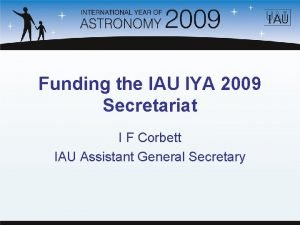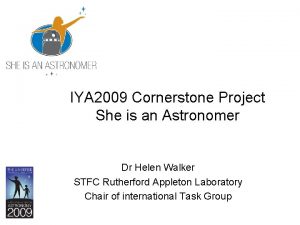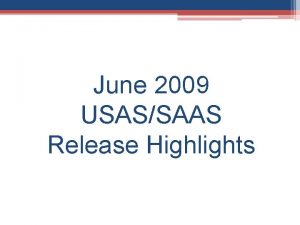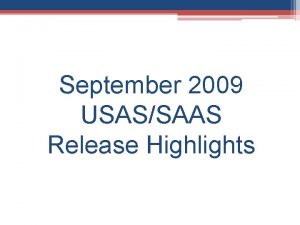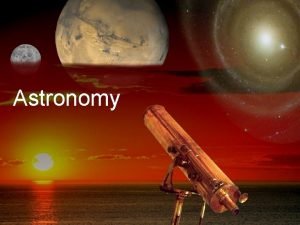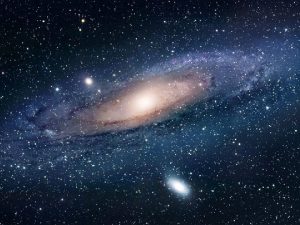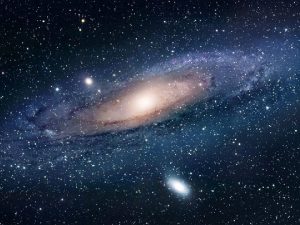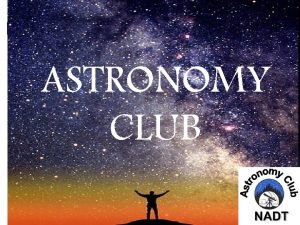Astronomy highlights during IYA 2009 Astronomy is a

















- Slides: 17

Astronomy highlights during IYA 2009

Astronomy is a dynamic and ever-changing science, where new discoveries are regularly made. Many thousands of astronomers around the world are working to progress our knowledge. 2009 is the International Year of Astronomy, or IYA 2009 for short. It is the perfect time to learn about the Universe as there are lots of space missions and celestial events to look forward to. ESA/NASA/Hubble Let’s take a look at some of the highlights of astronomy taking place during IYA 2009, from what will be visible in the night sky to the latest space missions exploring the Universe.

Early 2009: Hubble Servicing Mission The Hubble Space Telescope is an observatory in orbit around the Earth. It has produced incredible images and amazing science. It needs servicing missions to keep it equipped with the latest instruments. In 2009, Servicing Mission 4 will overhaul Hubble, kitting it out with new gadgets and extending its life by at least five years. On the web: http: //www. spacetelescope. org/about/history/servicing_mission_4. html Credit: ESA

March: Kepler Mission Kepler is an exciting mission designed to search for planets like our Earth, but which are orbiting distant stars. It will do this by watching stars and seeing if they suddenly become dimmer, a sign that a planet is passing in front and blocking some of the light. Kepler will be positioned in space, following the Earth as it orbits the Sun. This way the Earth won’t get in Kepler’s view. On the web: http: //kepler. nasa. gov/ Credit: NASA

April: Herschel 2009 will see the launch of the Herschel Space Observatory. It is equipped to study farinfrared and submillimetre wavebands. It will specialise in studying galaxy formation, star creation, and the atmospheres in our Solar System. Herschel will be operational for at least three years, and hopefully much longer. On the web: http: //herschel. esac. esa. int/ Credit: ESA (Image by AOES Medialab); background: Hubble Space Telescope, NASA/ ESA/ STSc. I

April: Planck Herschel will be launched along with the Planck satellite. Its mission is to observe the cosmic microwave background radiation, thought to be left over from the Big Bang. It will also create a catalogue of galaxy clusters, observe bright radio and infrared sources beyond our Galaxy, and study objects within our Solar System. Credit: ESA-CNES-Arianespace / Optique Vidéo du CSG - L. Mira On the web: http: //www. rssd. esa. int/index. php? project=Planck

April: Lunar Reconnaissance Orbiter The Lunar Reconnaissance Orbiter, or LRO for short, has an important mission: survey the Moon and search for landing sites, to be used in a future manned mission. Piggy-backing on the launch of LRO will be the Lunar CRater Observation and Sensing Satellite (usually abbreviated to LCROSS). This device will look for any water thrown up after part of the probe crashes into a lunar crater. Credits: NASA. On the web: http: //lunar. gsfc. nasa. gov/

Mid-2009: Gran Telescopio Canarias A new observatory will be beginning science operations in 2009. Called Gran Telescopio Canarias (Great Telescope Canary Islands), it took seven years to build. Its primary mirror is actually made from 36 hexagonal segments, working together as if they are a single piece of glass. It will be used to study planets around other stars, remote galaxies, and even black holes. On the web: http: //www. gtcdigital. net/? lang=en Credit: H. Raab

July: Solar Eclipse On 22 July 2009, many people will witness the longest Solar Eclipse of the 21 st Century. It will be visible in counties including India, Bangladesh, and China. Totality will last for up to 6 minutes 39 seconds. If you want a longer eclipse, you will have to wait until June 2132! Credit: Luc Viatour

August: Ringless Saturn is probably best known for its spectacular rings. These around 11, 000 km wide, but only 20 metres thick. As the Earth and Saturn orbit the Sun, our view of the ringed planet changes. During August and the beginning of September, we will see the rings edge-on. As they are so thin, they will seem to disappear from view! Credits: NASA/ESA and The Hubble Heritage Team STSc. I/AURA)

September: Jupiter without its Moons As amateur astronomers know, anyone with a small telescope can see the planet Jupiter and its four brightest moons. They appear as pinpricks of light, orbiting the gas giant. They were first seen by Galileo in 1610. Credit: Bresson Thomas Late on the night of 2 September, many observers in the Western hemisphere will be able to see Jupiter without its moons for a few hours, as they will all be either directly in front or behind the planet – a very rare sight indeed! Credit: NASA/JPL/DLR

October: Large Hadron Collider The Large Hadron Collider is the world's largest and highest-energy particle accelerator. It was made to study gravity, dark matter, and many other strange topics. A technical failure occurred in 2008 which meant that operations had to be halted. Collisions between particles are expected to resume in October 2009. Credits: Maximilien Brice, CERN On the web: http: //lhc. web. cern. ch/lhc/

October: Phobos-Grunt An ambitious Russian mission, Phobos-Grunt will be sent to Mars in 2009. It is designed to land on Mars’ moon Phobos, retrieve a sample from the surface, and then return it to the Earth for study in 2012. Phobos-Grunt will spend several months studying the Martian system from orbit, before attempting the landing. Credit: Babakin Science and Research Space Center On the web: http: //www. esa. int/SPECIALS/ESA_Permanent_Mission_in_Russia/SEMIJFW 4 QWD_0. html

October: Yinghuo-1 Launching with Phobos-Grunt is the Chinese Yinghuo-1 mission. It will orbit the planet Mars for one year, during which time it will study the external environment of the red planet. Credit: ynet. com Yinghuo-1 weighs 110 kg and is powered with solar arrays. On the web: http: //www. cnsa. gov. cn Credit: NASA

November: Leonid Meteors On a clear night you may be lucky enough to see a “shooting star”; a piece of cosmic debris burning up in the Earth’s atmosphere. Every November sky-watchers enjoy an annual meteor (shooting star) shower, called the Leonids. The Leonids in 2009 may be particularly enjoyable as some astronomers predict that for a short time more than 500 meteors per hour will be visible! Credits: Babak Tafreshi/Dreamview. net

This is just a small selection of what is occurring throughout the year. There are many more missions and night-sky events to look out for. ESA/NASA/Hubble During IYA 2009, the Universe is yours to discover!

www. astronomy 2009. org Global Sponsors Organisational Associates Media Partners
 Iya abubakar computer center
Iya abubakar computer center Apa arti suwatte kudasai
Apa arti suwatte kudasai Learning astronomy by doing astronomy activity 1 answers
Learning astronomy by doing astronomy activity 1 answers Learning astronomy by doing astronomy answers
Learning astronomy by doing astronomy answers Learning astronomy by doing astronomy
Learning astronomy by doing astronomy Highlights from the book of isaiah
Highlights from the book of isaiah Drawing a face highlights what principle of design
Drawing a face highlights what principle of design Proposal highlights
Proposal highlights Highlights from the book of isaiah
Highlights from the book of isaiah Highlights memorandum
Highlights memorandum Daily activities work immersion
Daily activities work immersion Investment highlights
Investment highlights The passage highlights……
The passage highlights…… Key highlight icon
Key highlight icon Aladin 2009
Aladin 2009 2009
2009 Uma máquina fotográfica custava r$ 400
Uma máquina fotográfica custava r$ 400 Nec 2009
Nec 2009
